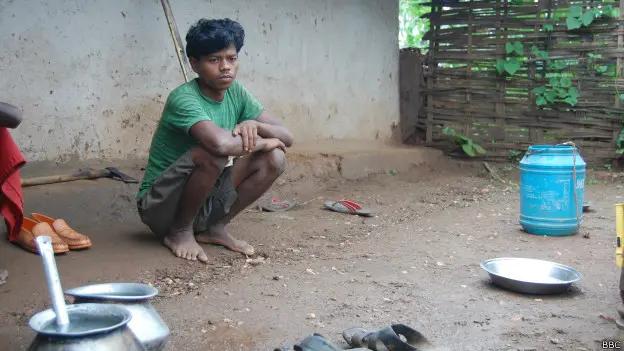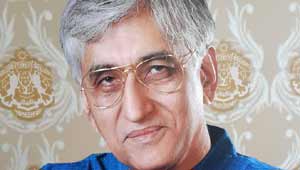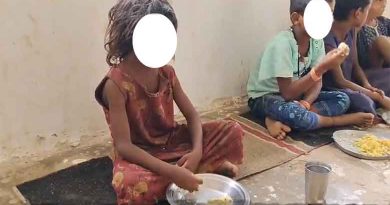Beejakura: Where India’s food policy was announced, even now home of hunger
Raipur | Correspondent: This incident dates back to February 29, 1992, when the widely respected newspaper ‘Deshbandhu’, Raipur, reported the tragic deaths from starvation of Jakkli Bai and her son, members of the specially protected Pando tribal community in Sarguja district of Chhattisgarh.
Kaushal Mishra’s report garnered such attention that it compelled leaders from both the ruling and opposition parties to visit the village where this family succumbed to hunger.
The village was named Beejakura.
32 years later, Beejakura is once again in the spotlight.
A video circulating on social media shows children during their midday meal eating rice mixed with turmeric.
These 43 children claim that they only receive rice with turmeric and salt.
On the other hand, members of a women’s self-help group responsible for providing meals say they do not have sufficient funds to provide the children with lentils or vegetables.
Beejakura: Home of Hunger and malnutrition

Once part of Madhya Pradesh’s Sarguja district, Beejakura is now part of Balarampur, Chhattisgarh.
The village’s geography has changed, but its plight remains unchanged.
Hunger and malnutrition were prevalent in this village then, and they continue to plague it now.
Beejakura stands as a stark reminder of our system, which has consistently failed to prioritize any government’s attention over these years.
In this dependent village of Lagdi Gram Panchayat, all facilities continue to be a struggle.
Ribai Pando’s granddaughter-in-law and grandson died of hunger
It was the hunger deaths of Jakkli Bai and her grandson that attracted attention in both domestic and international media, igniting political turmoil.
Nearly 800 kilometers away from Beejakura village, the echo of hunger deaths reached Bhopal, the capital, leading the opposition party to boycott the entire legislative session.
Former Chief Ministers Shyama Charan Shukla and Motilal Vora rushed to Ribai Pando’s village.
The matter reached Parliament, and following a debate in the Lok Sabha, then-Prime Minister Narsimha Rao decided to visit Ribai Pando’s village in May.
In May 1992, Prime Minister Narsimha Rao arrived in the area and announced a food policy to ensure that the poor receive grains from government warehouses.
But all this is history now.
Despite such announcements, Ribai Pando’s son, Ramvichar Pando, succumbed to malnutrition.
Ribai Pando lived for several more years and remained in the media spotlight.
Ram Sai Pando continued to suffer from food deprivation

When grandson of Ribai pando, Ramsai Pando returned to Beejakura village to take care of farming, he hoped that his life would not be as arduous and precarious as the roads.
However, hunger and malnutrition awaited Ramsai Pando upon his return.
When this reporter met Ramsai Pando in Beejakura village in 2013, it became clear that the government did not recognize him as poor despite living in a thatched hut and subsisting on salted rice.
Even after repeated requests, Ramsai’s BPL (Below Poverty Line) card was not issued.
Other villagers also revealed that all tribals in the village, like Ramsai Pand, only had APL (Above Poverty Line) cards.
At the time, the then SDM SP Upadhyay assured this reporter that they would investigate the matter.
However, officials have their priorities, and tribals like the Ramsai Pandos are never their priority.
Perhaps this explains why the suffering of Beejakura shows no signs of diminishing.



